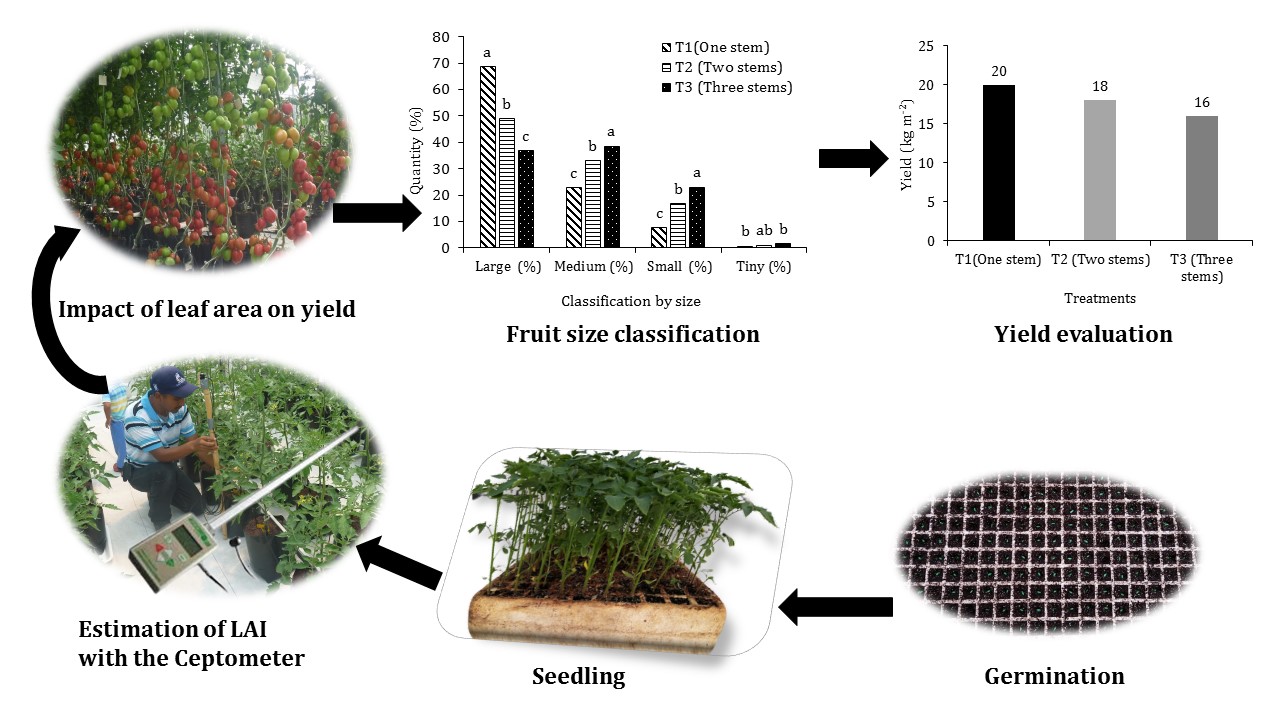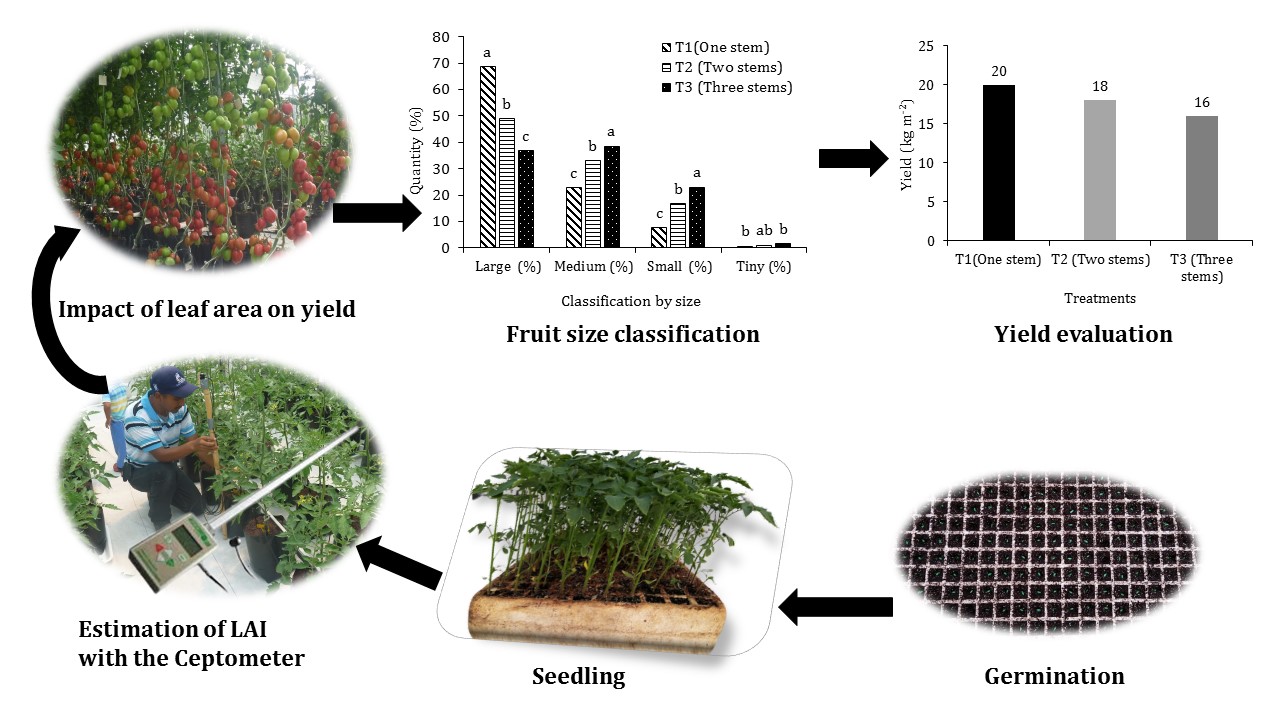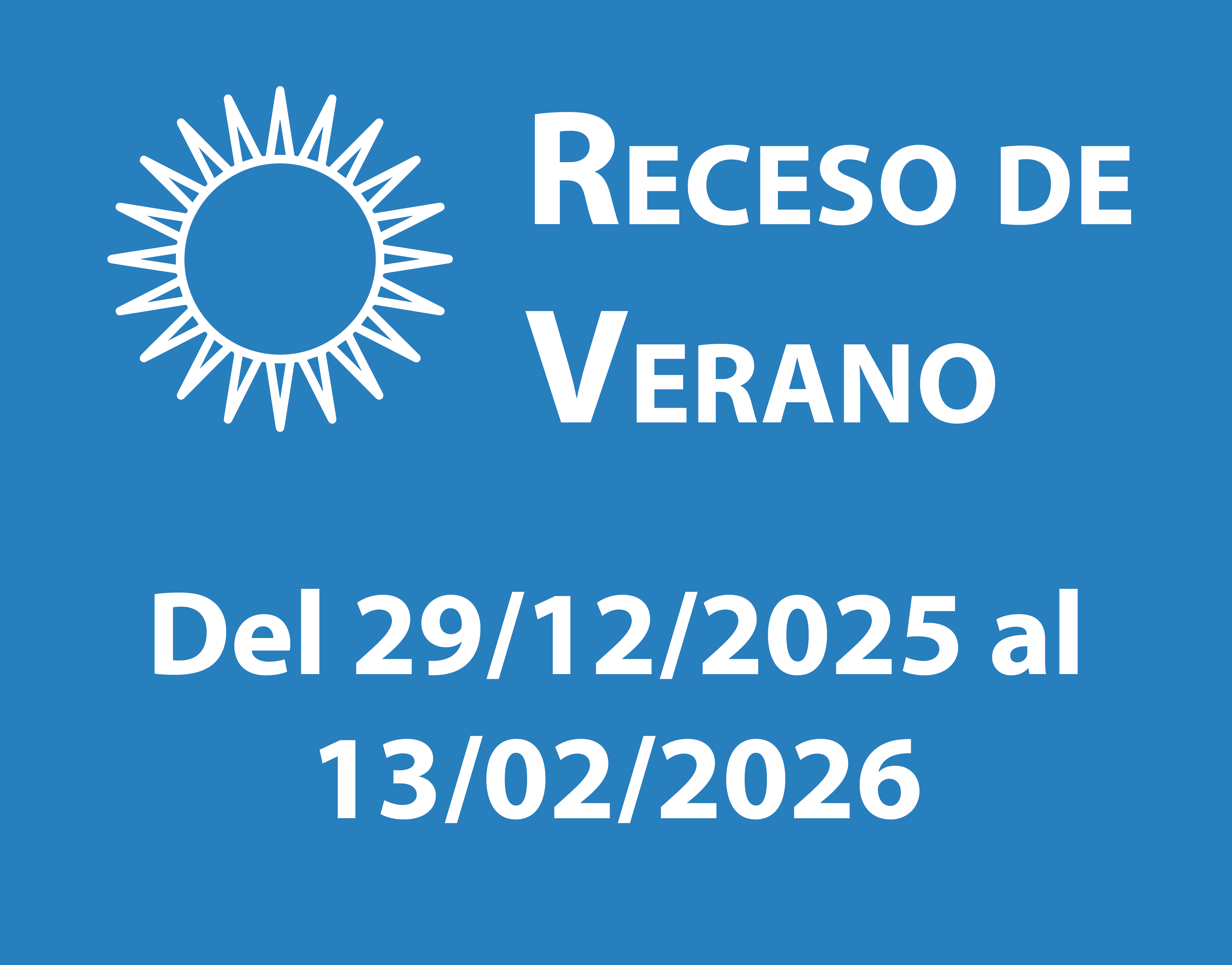Leaf area and its impact in yield and quality of greenhouse tomato (Solanum lycopersicum L.)
DOI:
https://doi.org/10.48162/rev.39.065Palabras clave:
Solanum lycopersicum L., ceptómetro, radiación fotosintéticamente activaResumen

This study aimed to estimate the tomato leaf area index (LAI) by comparing two methods (destructive and interception of photosynthetically active radiation) and the consequent relationship to fruit yield and quality. The experiment was carried out in a greenhouse with tezontle (red volcanic scoria) as the substrate and a drip irrigation system. The experiment consisted of three treatments: T1, T2 and T3, with one, two and three stems per plant, respectively. The LAI was measured with a ceptometer that estimates the intercepted radiation above and below the canopy. Maximum LAI was found at 1413 cumulative growing degree days (CGDD). Those indexes were 3.69, 5.27 and 6.16 for T1, T2 and T3, respectively. Individual correlation models were fitted linearly between the two methods. The R2 values were 0.98, 0.99 and 0.99 with yields of 20, 18 and 17 kg m-2 for T1, T2 and T3, respectively. In addition, T1 produced better fruit size quality with approximately 69, 23 and 8% classified as first, second and third class, respectively. Only 1% was classified as a small fruit. Increasing the number of stems per plant increased the LAI and fruit number but decreased fruit size.
Highlights:
- The leaf area index (LAI) is a very important variable for growth and development of crops.
- The ceptometer proved to be a fast, useful and statistically reliable method to estimate LAI.
- The increase of photosynthetically active radiation favors the photosynthetic efficiency per unit area.
- The number of stems per plant increase the LAI, dry matter accumulation, plant height and the number of fruits. However, the size of fruit decreases.
Descargas

Descargas
Publicado
Cómo citar
Número
Sección
Licencia
Derechos de autor 2018 Revista de la Facultad de Ciencias Agrarias UNCuyo

Esta obra está bajo una licencia internacional Creative Commons Reconocimiento-NoComercial-CompartirIgual 3.0.
Aquellos autores/as que tengan publicaciones con esta revista, aceptan las Políticas Editoriales.











.jpg)




